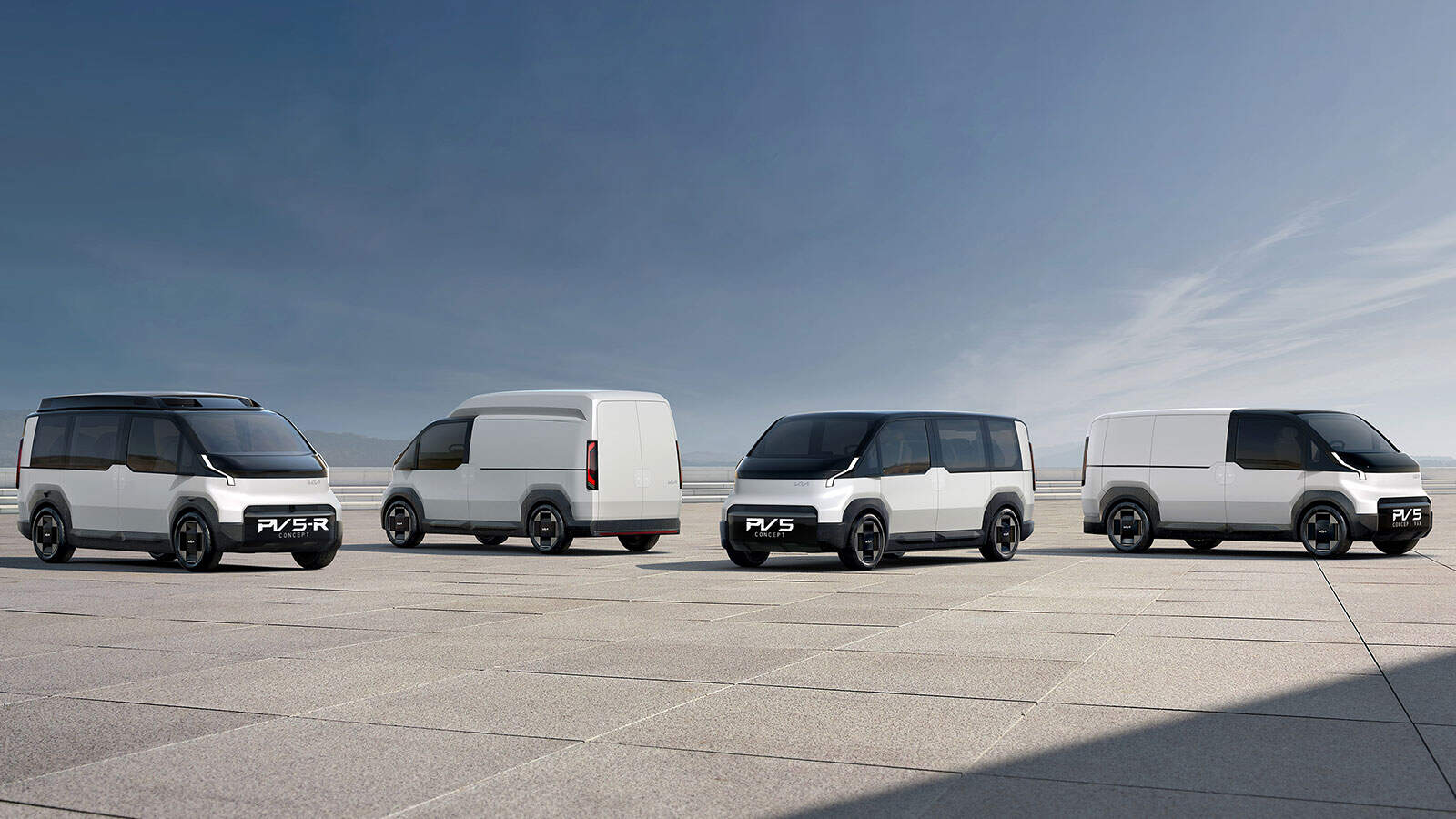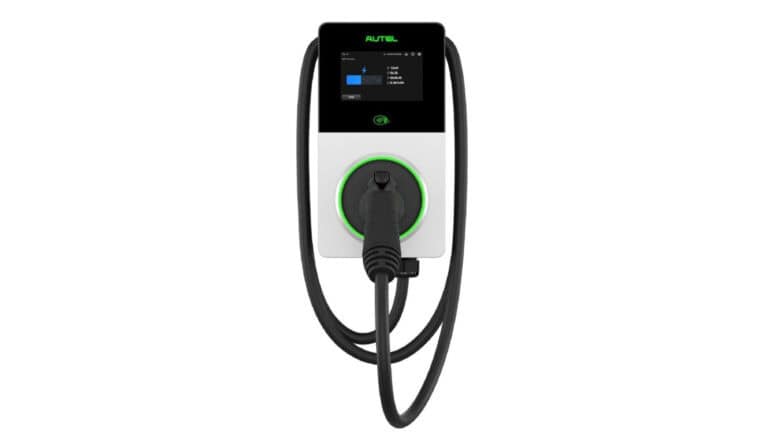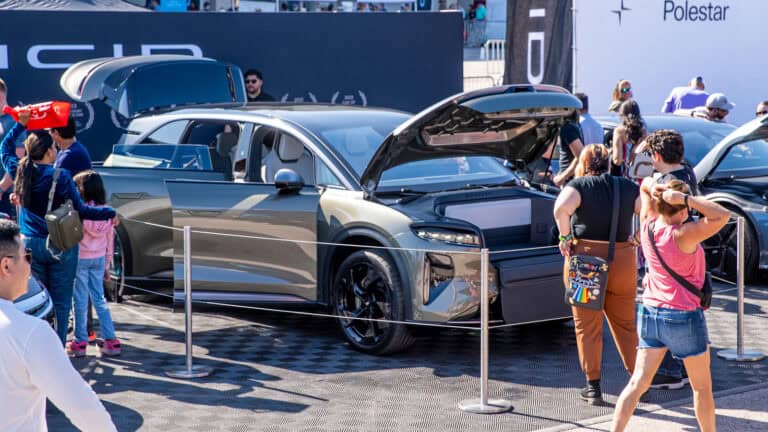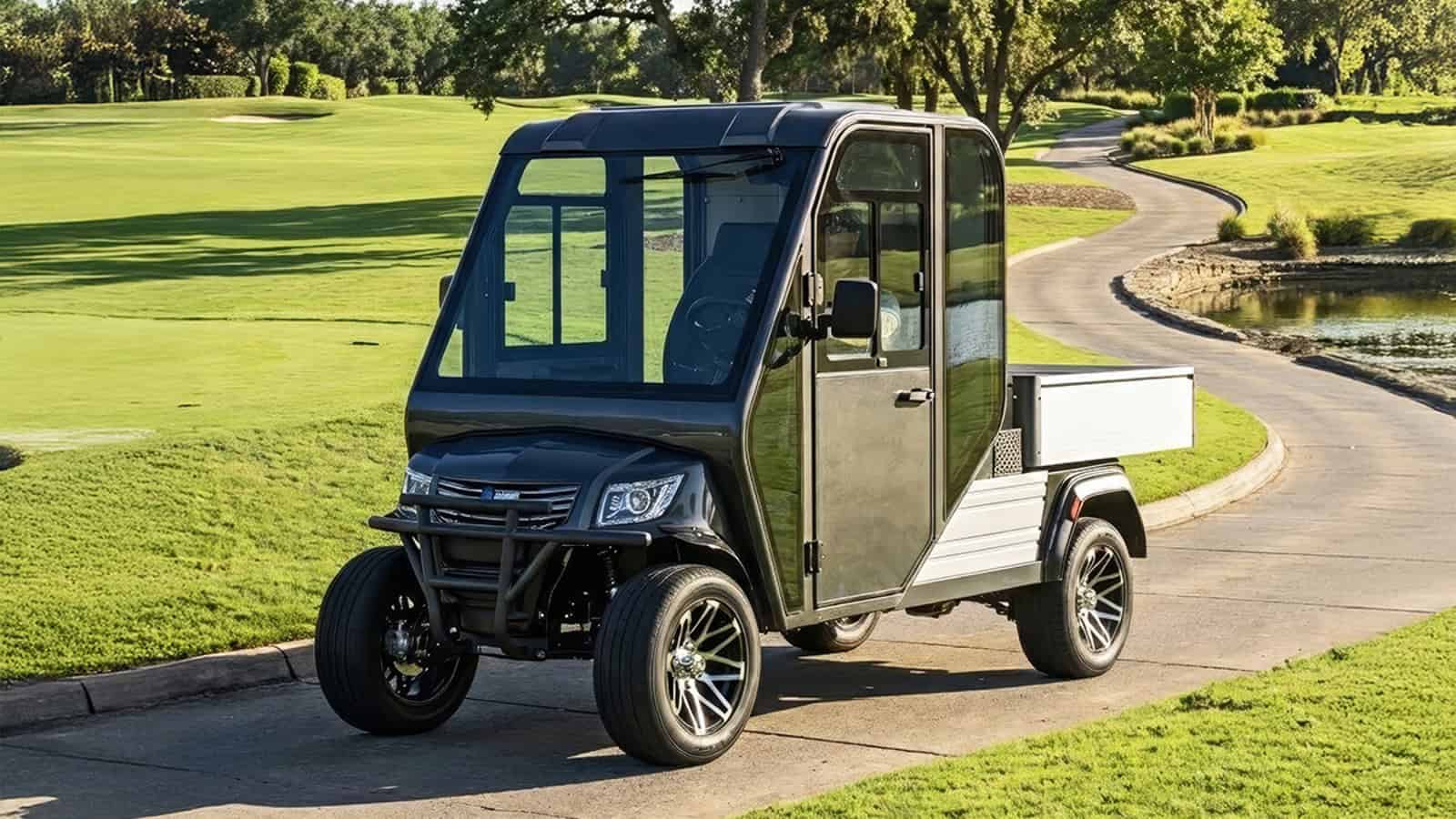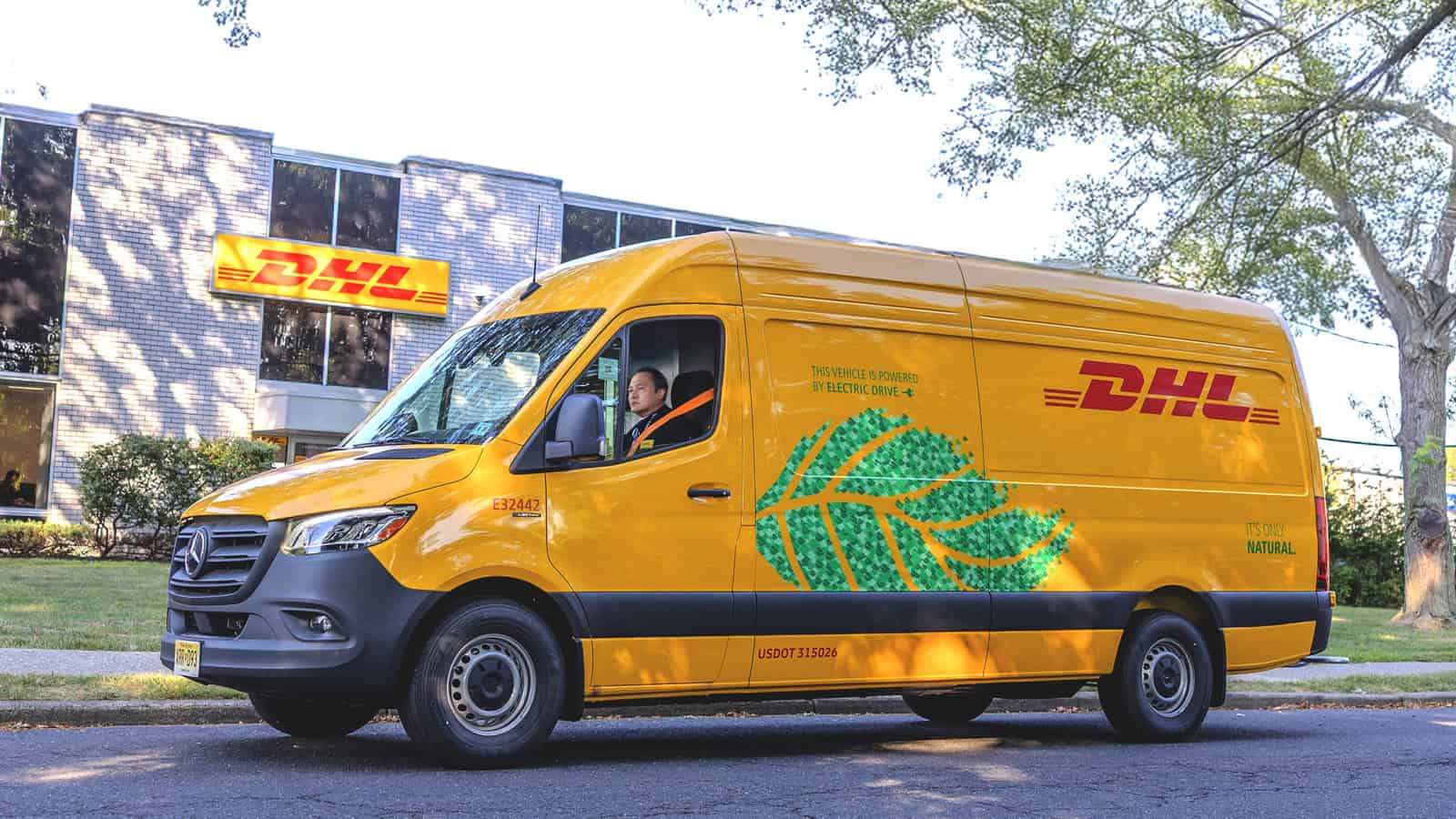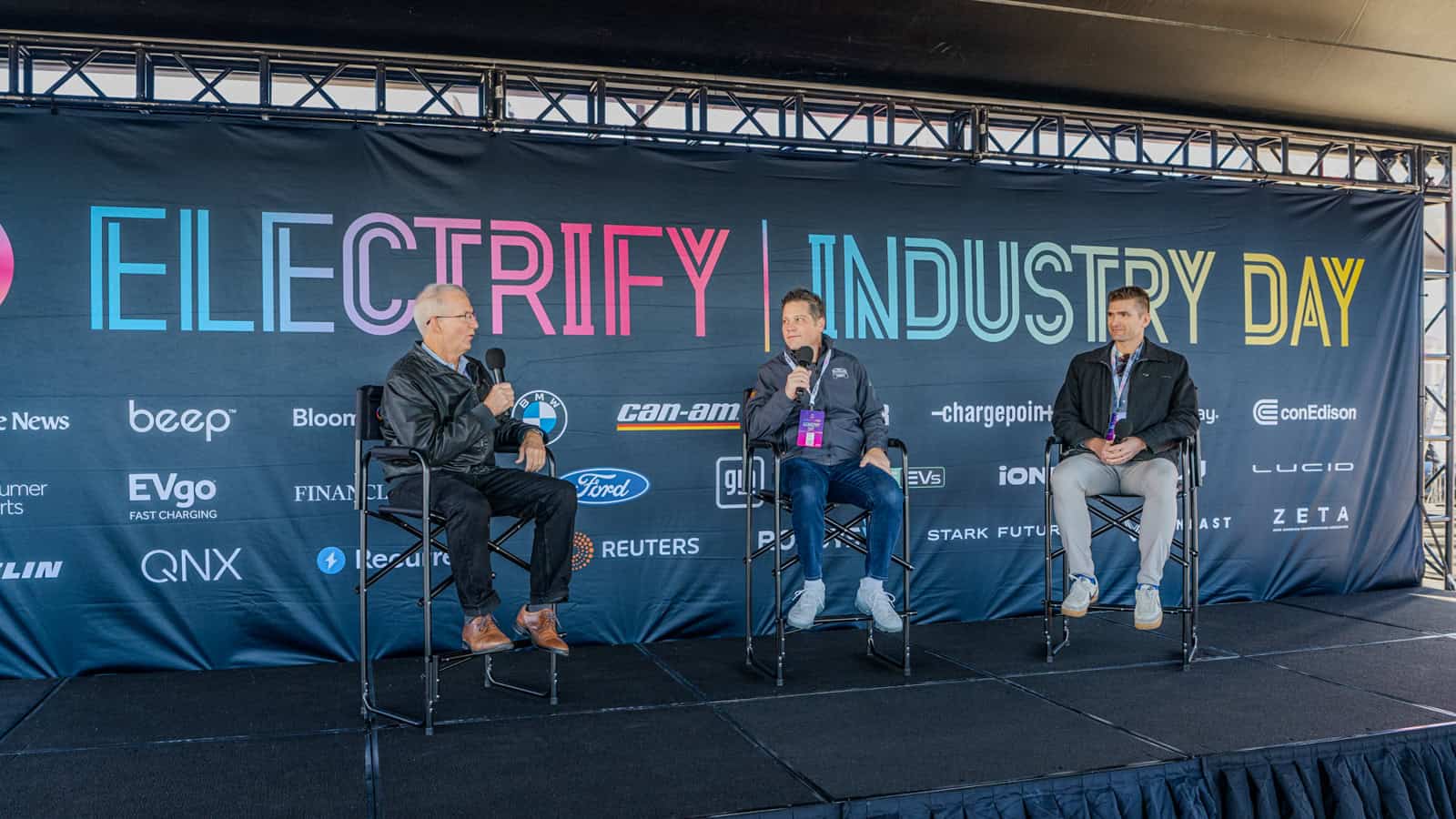- The PBV lineup includes four versatile modular vehicles that drivers can transform with unique life modules.
- Kia will outfit the PBVs with innovative robotics, AI-based technology, and smart charging solutions.
- The automaker has lofty goals to sell 250,000 PBVs annually by 2030.
Kia is set to dominate the electric mobility market, not just with its growing lineup of attractive, fun-to-drive, and innovative passenger cars, but with its upcoming lineup of versatile commercial EVs. At the 2024 Consumer Electronics Show in Las Vegas, the automaker debuted the PBV (Platform Beyond Vehicle). A few months later, Kia has now shared its plan for the flexible and futuristic battery-electric modular vehicles.
ADVERTISEMENT
According to Kia, drivers can use the PBV lineup to redefine mobility and how vehicle space is used. Eventually, the lineup will include four EVs, easily named PV1, PV3, PV5, and PV7. As the numbers increase, so do the sizes of the platforms. The Kia PV5 will be the first model to be sold with an expected delivery date in 2025.
Two years later, Kia expects to release the Kia PB7 by 2027, and by 2030, the automaker plans to sell 250,000 PBVs annually. The PBV lineup is expected to feature innovative robotics, autonomous driving, and advanced air mobility (yes, Kia has a branch dedicated to urban, electrified flight) as it pushes forward the goals of Kia and its parent company Hyundai Motor Group.
The PBV Plan
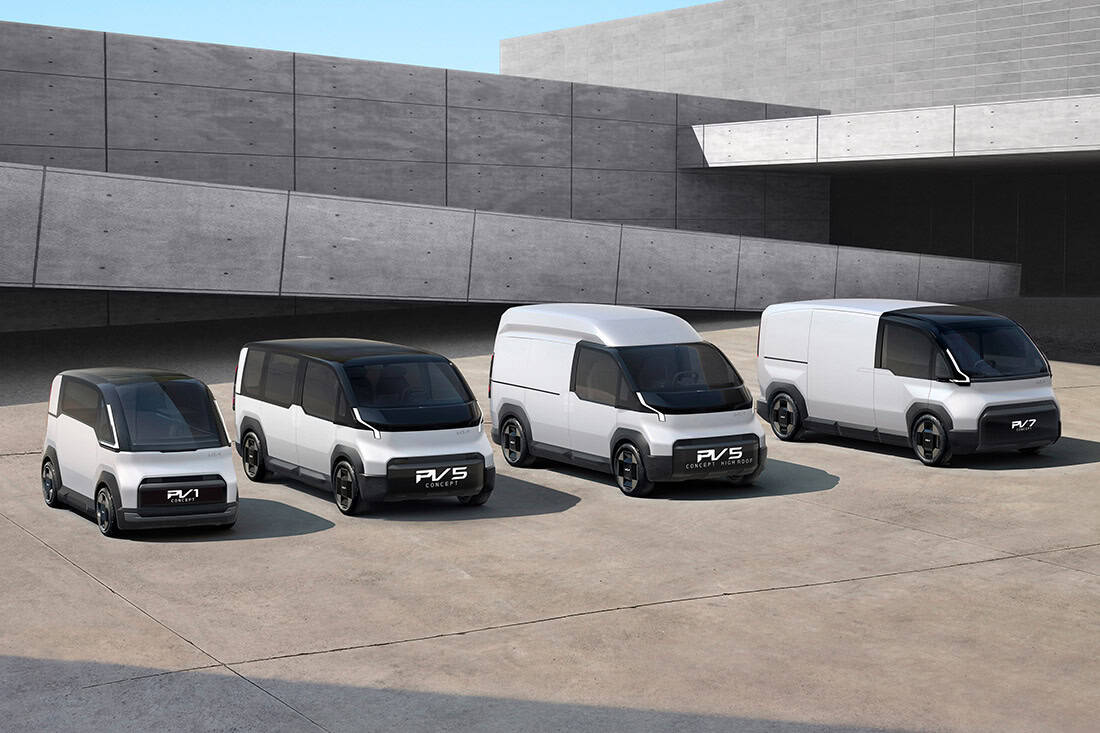
Kia’s PBV plan began as a concept and is quickly moving toward reality. The first phase of the plan is the introduction of the Kia PV5, a mid-size platform vehicle perfectly sized for several commercial needs. The second phase involves completing the lineup of four PBV vehicles and adding AI-based technology to update software and new technologies.
The third, and most exciting, phase turns the PBV system into a fully customizable and interactive mobility program. The modular vehicles will eventually deliver a bespoke transportation experience that seamlessly integrates transportation, lifestyle, and ecosystems weaving together the energy grid, robotics, and futuristic technology. Kia images a futuristic world where PBV transportation is as natural as breathing with comfortable and intuitive air, rail, and personal modes of movement.
ADVERTISEMENT
During the first phase, Kia will offer the PV5 in four styles: Basic, Van, High Roof, and Chassis Cab versions. Phase two will feature the PV7 and PV1 — the largest and smallest models in the lineup. The PV7 has the most interior space, while the PV1 is designed to fit into narrow city parking spots for short-distance logistics. During the third phase, Kia’s plans involve a futuristic world where PBV transportation is as natural as breathing with comfortable and intuitive air, rail, and personal modes of movement.
To meet the expected demand, Kia plans to build a PBV-dedicated plant in Autoland Hwaseong, Korea. Kia shared the 2025 plans at the recent CEO Investor Day.
What to Expect From the Kia PBV

The Kia EV lineup already meets the needs of drivers looking for more than basic transportation, and the new PBV vehicles will meet even more transportation demands. Each PBV will feature a driver zone in a fixed cab, while the rest of the vehicle is customizable. Kia calls the versatile upper bodies “life modules” that connect through a hybrid electromagnetic and mechanical coupling technology.
Kia imagines drivers will change their PBV life modules to meet their driving needs. For example, a driver might have a PV5 that they use as a delivery vehicle during the work week, then the driver swaps the life module to turn the PV5 into a personal recreational vehicle for a weekend in the woods.
The flexibility of the Kia PBV comes from a weldless body structure called “Dynamic Hybrid.” The life modules are lightweight thanks to the structure made from strong tubular steel and engineered polymers. Kia plans to ship the modules in kit form so that drivers can easily transform their PVs anywhere, anytime.
ADVERTISEMENT
Useful, Minimalist Design
PBVs have a minimalist design that goes beyond aesthetics. These useful vehicles have intuitive interfaces and simple operating systems to deliver dependable and capable transportation. You won’t find unnecessary decorations, as these Kia EVs are designed for functionality not fashion.
All life modules and driver zones have intuitive graphics, flat open spaces, and desk-like cockpit spaces. The accommodating, pillarless doors make entering and exiting the PBV seamless and convenient. PBVs have extended wheelbases for limitless storage and usage. Many interior features have several uses, including the steering wheel which can become a desk lamp when the PBV is parked.
Fleet Management and Charging Solutions
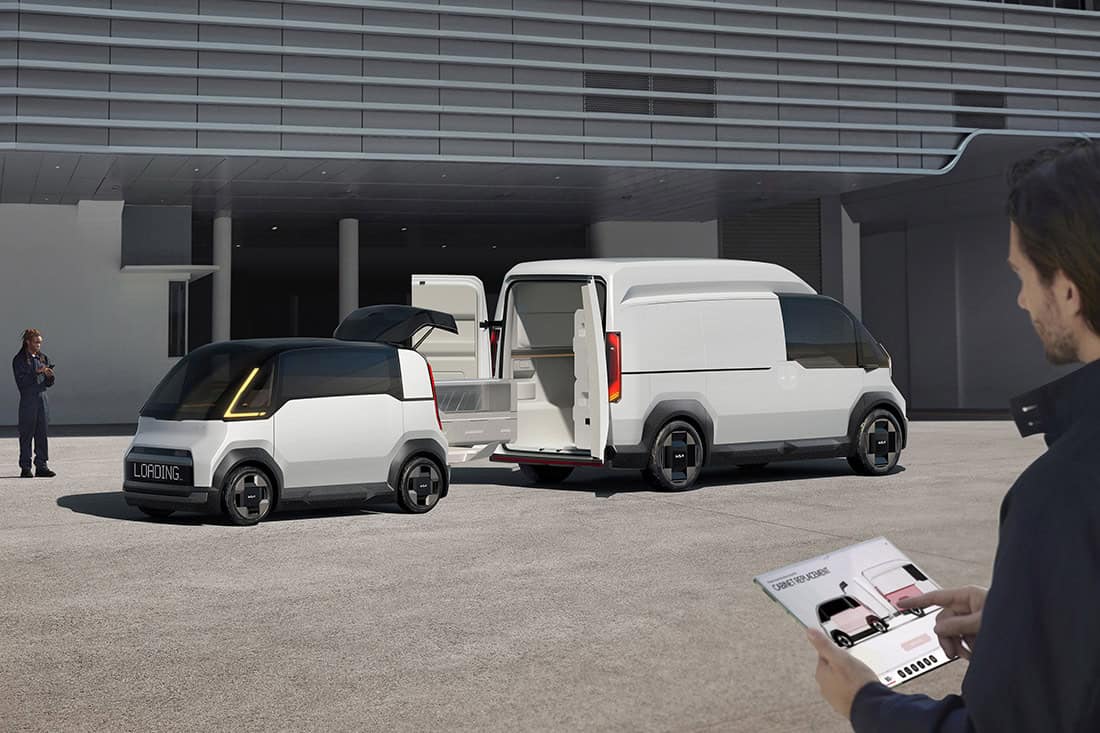
Kia expects that the PBV lineup will be popular with fleet managers. Therefore, the automaker is planning to offer a fleet management system. Fleet managers can use the technology to track inventory, logistics, sales, PBV temperature, charging needs, and routes.
The Fleet Management Systems (FMS) will work in tandem with the In-Vehicle Infotainment (IVI) system to help fleet managers control downtime by predicting maintenance needs and creating smart charging programs. The EV charging system will include Vehicle-to-Everything (V2X) technology to get the most out of the high-density battery range.
ADVERTISEMENT

IMAGES: KIA
FTC: We use income-earning auto affiliate links. Learn more.


